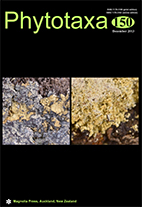Abstract
As part of an ongoing species inventory for the Galapagos Archipelago, sterile leprose and leproid lichens have been revised. Differences between leprose vs. leproid growth forms are discussed in the light of significant recent advances in the taxonomy of Lepraria. Five species have a strictly leprose morphology: Lepraria achariana, L. aff. incana, L. finkii, and L. vouauxii (all new to Galapagos), and L. lendemeri sp. nov. A sixth species, L. tenella, forms minutely fruticose thalli, but its recent transfer from Leprocaulon into Lepraria confirms its close affinity to species with similar chemistry such as L. vouauxii. Even though L. vouauxii does not develop pseudopodetia, it forms thalli that closely resemble immature specimens of L. tenella. Fertile material of a seventh species, “Lepraria” usnica, also new to Galapagos, confirms that this species does indeed belong in the Pilocarpaceae as molecular studies previously indicated. Its apothecia are identical to those of a Septotrapelia. Consequently, the recently described genus Nelsenium is reduced to synonymy and the new combination Septotrapelia usnica proposed. Many other sterile lichens occur in Galapagos and several have a very similar, leproid or even leprose morphology. A key for all those taxa is presented, emphasizing their inconspicuous, though distinct morphological differences.

